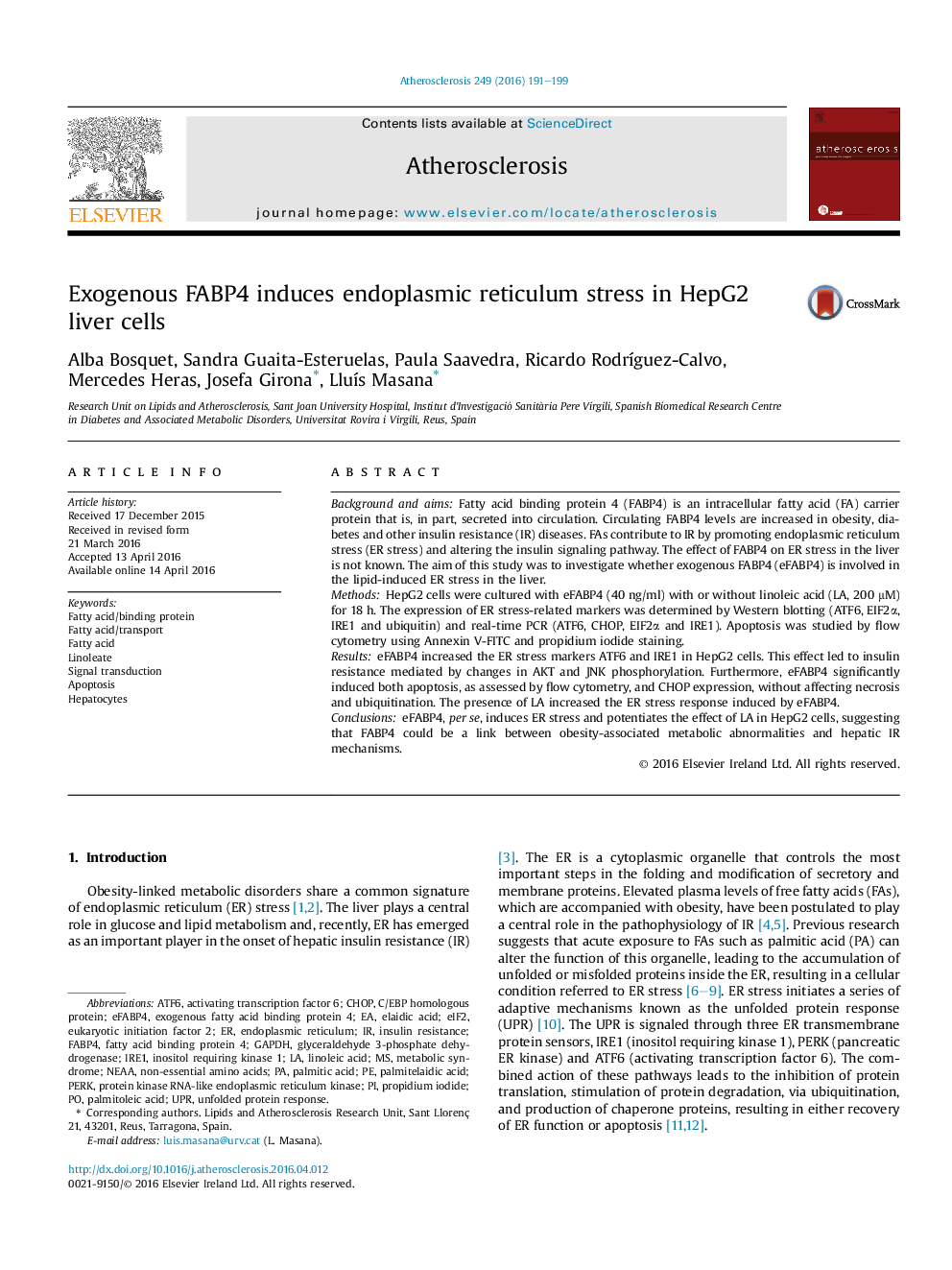| کد مقاله | کد نشریه | سال انتشار | مقاله انگلیسی | نسخه تمام متن |
|---|---|---|---|---|
| 5943192 | 1574716 | 2016 | 9 صفحه PDF | دانلود رایگان |

- eFABP4, per se, triggers ER stress and potentiates the effect of LA in HepG2 cells.
- The mechanisms underlying the ER stress by eFABP4 involves ATF6 and IRE1 pathways.
- eFABP4 induces intracellular lipid accumulation and decreases cell viability.
- eFABP4-induced ER stress impairs insulin signaling pathway via JNK phosphorylation.
- eFABP4 could be a link between obesity-related metabolic alterations and hepatic IR.
Background and aimsFatty acid binding protein 4 (FABP4) is an intracellular fatty acid (FA) carrier protein that is, in part, secreted into circulation. Circulating FABP4 levels are increased in obesity, diabetes and other insulin resistance (IR) diseases. FAs contribute to IR by promoting endoplasmic reticulum stress (ER stress) and altering the insulin signaling pathway. The effect of FABP4 on ER stress in the liver is not known. The aim of this study was to investigate whether exogenous FABP4 (eFABP4) is involved in the lipid-induced ER stress in the liver.MethodsHepG2 cells were cultured with eFABP4 (40 ng/ml) with or without linoleic acid (LA, 200 μM) for 18 h. The expression of ER stress-related markers was determined by Western blotting (ATF6, EIF2α, IRE1 and ubiquitin) and real-time PCR (ATF6, CHOP, EIF2α and IRE1). Apoptosis was studied by flow cytometry using Annexin V-FITC and propidium iodide staining.ResultseFABP4 increased the ER stress markers ATF6 and IRE1 in HepG2 cells. This effect led to insulin resistance mediated by changes in AKT and JNK phosphorylation. Furthermore, eFABP4 significantly induced both apoptosis, as assessed by flow cytometry, and CHOP expression, without affecting necrosis and ubiquitination. The presence of LA increased the ER stress response induced by eFABP4.ConclusionseFABP4, per se, induces ER stress and potentiates the effect of LA in HepG2 cells, suggesting that FABP4 could be a link between obesity-associated metabolic abnormalities and hepatic IR mechanisms.
Journal: Atherosclerosis - Volume 249, June 2016, Pages 191-199